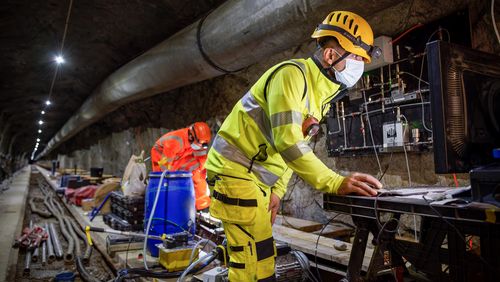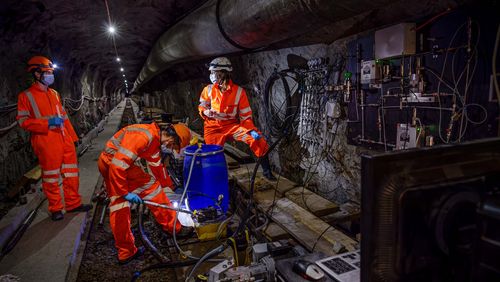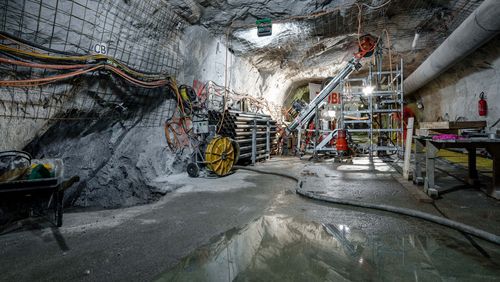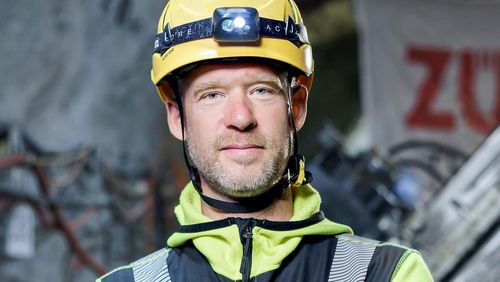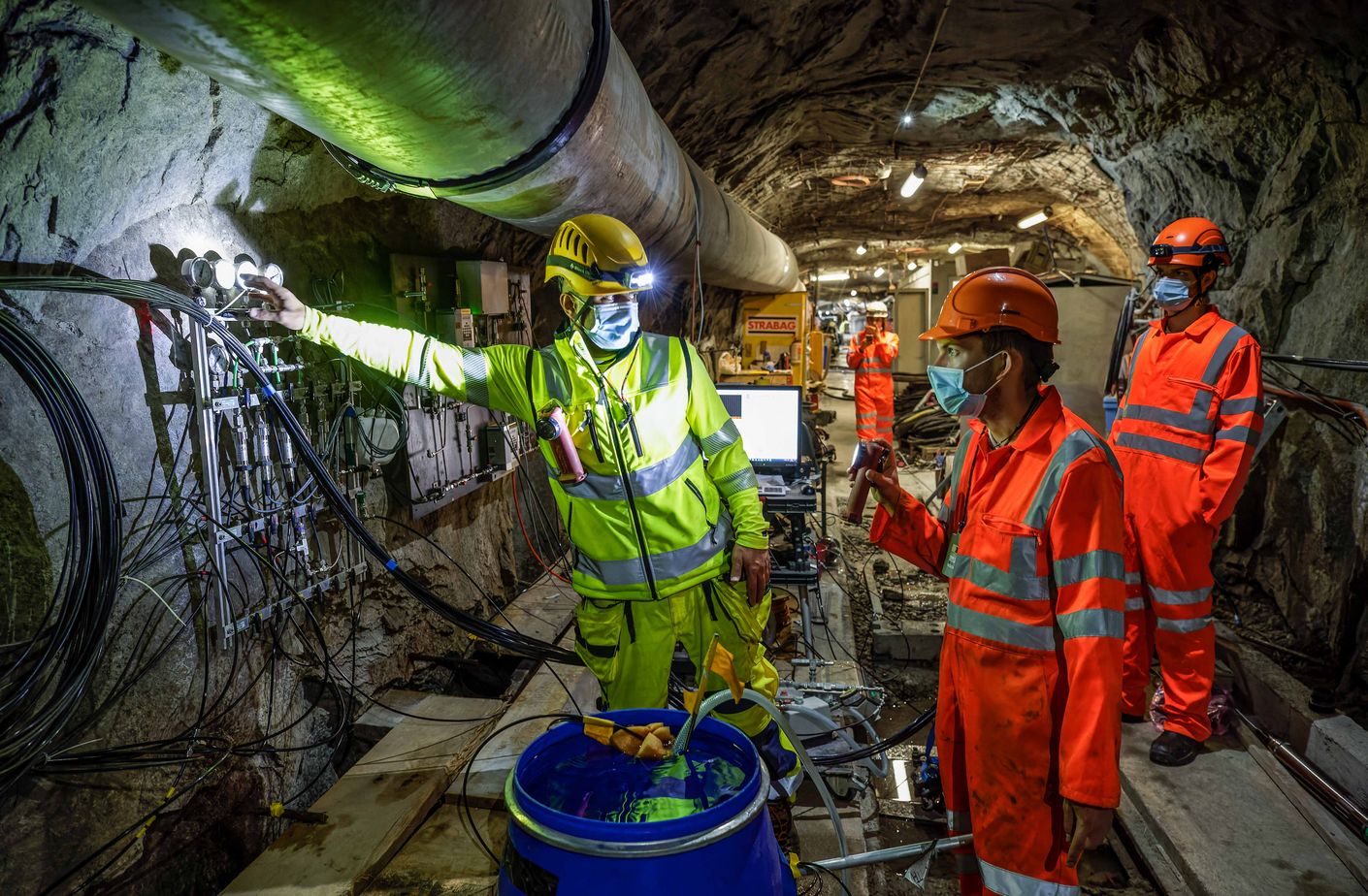
Drilling deep
The preparations for the Bedretto Underground Lab took just over a year. But what might sound quick and easy was in reality an immense feat for both man and machine. Now, however, the lab infrastructure is set up and the deep geothermal energy experiments can begin.
“There were a few surprises,” says Dr Marian Hertrich, manager of the Bedretto Underground Lab. The biggest surprise came right at the start of the project. “We drilled 150 metres into the granite without hitting a single vein of water. Solid granite all the way.” This posed a fundamental problem, as tapping into deep geothermal energy is impossible in solid granite. To generate electricity from the heat in the earth’s interior, the rock layers must have fault zones with cracks and fissures—called joints—for water to flow through. One year on, the main boreholes in the lab have been completed: the construction workers eventually discovered zones with joints, and Marian Hertrich is now convinced that the geological conditions in the Bedretto Underground Lab are the “perfect playing field” for experiments on deep geothermal energy. Indeed, the boreholes penetrate several different geological states of granite: solid granite, fissured rock, pulverised granite. This diversity provides an ideal basis for the researchers to conduct experiments on all granite types found in Switzerland.
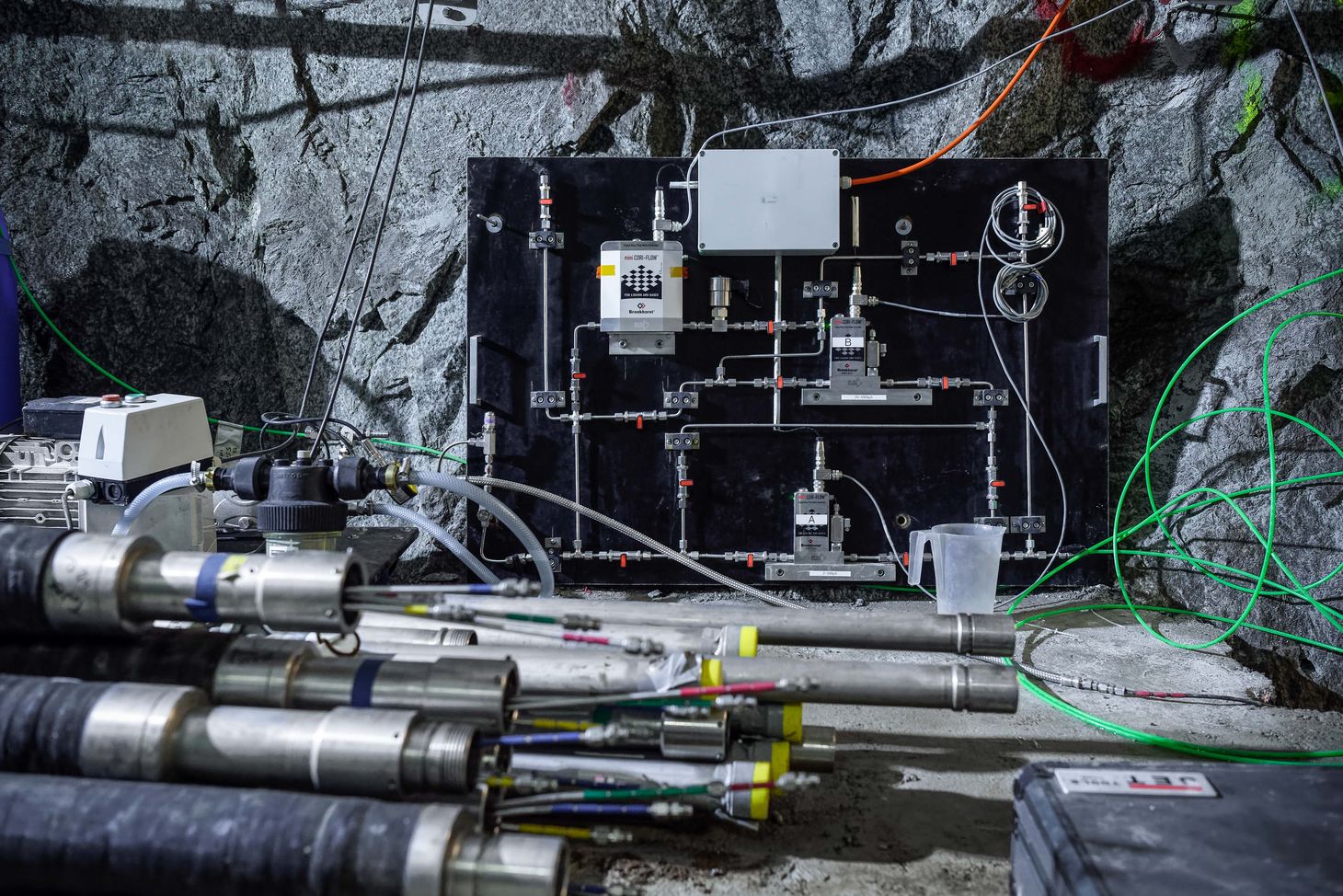
Boreholes for experiments
Two large boreholes were planned for the experiments. Each is 20 centimetres wide, one descending 350 metres, the other 400 metres. “400 metres is even deeper than planned,” says Domenico Giardini, project leader and professor of seismology and geodynamics at ETH Zurich. The team drilled four control boreholes around the two main boreholes; hundreds of sensors were then installed in the control boreholes to measure any changes in conditions during the experiments in the main boreholes—including seismic movement in the rock, sound waves, pressure, temperature and water flow. “Thanks to the sensors, we know what’s happening inside the rock,” says Domenico Giardini. Two additional control boreholes are planned for the winter. To create the control boreholes, the team used the “Wassara”, a new down-the-hole percussion hammer. Wassara was tested as part of the international technology project ZoDrEx (Zonal Isolation, Drilling and Exploitation), which was set up to assess the best drilling systems for deep geothermal energy. Wassara uses a water-powered hammer that breaks the rock with targeted blows rather than using a conventional rotating drill bit. “Once Wassara is set up, it works relatively quickly,” says lab manager Marian Hertrich, adding that the percussion hammer can drill several decimetres per hour. After the four control boreholes with sensors were completed, they were filled with cement, creating a compact, 400-metre-deep volume of rock with properties similar to the surrounding granite with regard to hardness, hydraulic conductivity, stiffness and porosity. “Now the rock doesn’t ‘realise’ it’s been drilled and equipped with sensors, and it reacts to the tests as if it were intact,” explains Giardini.
The lab is ready
“Officially, the first ‘real’ experiments on deep geothermal energy are slated to begin in October 2020,” announced Domenico Giardini in August. “Some 30 experts from Switzerland and abroad will participate, either in the tunnel or from one of the many monitoring screens. After the instruments and network have been checked, we’ll stimulate the granite by injecting water at high pressure into the rock and afterwards measuring how the fissures and cracks form.”
A moderate depth
The goal of the first experiments is to establish whether the rock at a depth of 1 400 metres reacts to stimulation the same way as at a lesser depth. The reason for this approach is that tapping into heat at a depth of 5 000 metres is no longer viewed as a requirement for deep geothermal power plants in Switzerland: to convert heat into electricity, reservoirs at a more moderate depth of 1 500 metres are now considered more viable. During the warm summer months when surplus energy is available, water can be pumped into the underground reservoirs where it is heated for use in winter when buildings and homes require warmth. “Municipalities in the cantons of Bern and Geneva already have plans for this kind of energy reservoir,” says Domenico Giardini. “Reservoirs at a more moderate depth have the advantage that we don’t need to drill to the 5 000-metre zone, where earth tremors naturally occur and where the situation is difficult to control.” Giardini adds that over 50 percent of Switzerland’s energy consumption is in the form of heat, mainly through heating systems. “This means we don’t need to transform the heat into electricity first—we can use it directly. It’s the way of the future.”
Text: Brigitt Blöchlinger
Photo: Felix Wey
